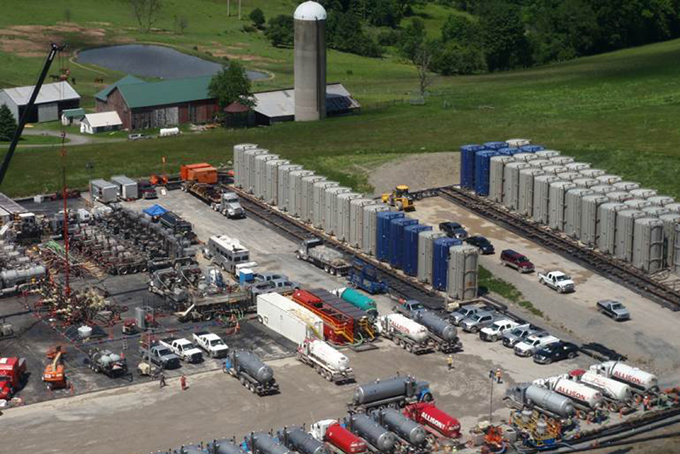
PITTSBURGH (AP) – The final report from a landmark federal study on hydraulic fracturing, or fracking, found no evidence that chemicals or brine water from the gas drilling process moved upward to contaminate drinking water at a site in western Pennsylvania.
The Department of Energy report, released Monday, was the first time an energy company allowed independent monitoring of a drilling site during the fracking process and for 18 months afterward. After those months of monitoring, researchers found that the chemical-laced fluids used to free gas stayed about 5,000 feet below drinking water supplies.
Scientists used tracer fluids, seismic monitoring, and other tests to look for problems, and created the most detailed public report to date about how fracking affects adjacent rock structures.
The fracking process uses millions of gallons of high-pressure water mixed with sand and chemicals to break apart rocks rich in oil and gas. That has led to a national boom in production, but also concerns about possible groundwater contamination.
But the DOE report is far from the last word on the subject. The Energy Department monitored six wells at one site, but oil or gas drilling at other locations around the nation could show different results because of variations in geology or drilling practices. Environmentalists and regulators have also documented numerous cases where surface spills of chemicals or wastewater damaged drinking water supplies.
The DOE study also ran into problems with the man-made markers meant to track possible long-term pollution. DOE said it was able to track the markers for two months after fracking, but then that method had to be abandoned when it stopped working properly.
A separate study published this week by different researchers examined drilling sites in Pennsylvania and Texas using other methods. It found that faulty well construction can cause pollution, but not fracking itself.
Avner Vengosh, a Duke University scientist involved with that study, just published in The Proceedings of the National Academy of Sciences, said in an email that it appears the Energy Department report on the Pennsylvania site is consistent with their findings.
The Energy Department report did yield some surprises. It found that the fractures created to free oil or gas can extend up to 1,900 feet from the base of the well. That’s much farther than the usual estimates of a few hundred feet. The Energy Department researchers believe that the long fractures may have followed existing fault lines in the Marcellus Shale or other formations above it.
___
Online: https://1.usa.gov/1u21vuL